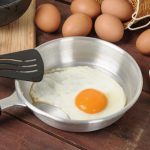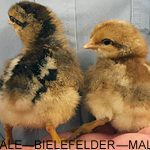
An egg’s internal qualities cannot be determined by looking at the outside of the egg. Detecting such things as blood spots, double yolks, hairline cracks, and thin shells requires candling the eggs. Candling means examining the contents of an egg by placing it against a bright light. It’s called candling because the bright light was […]
Continue Reading








